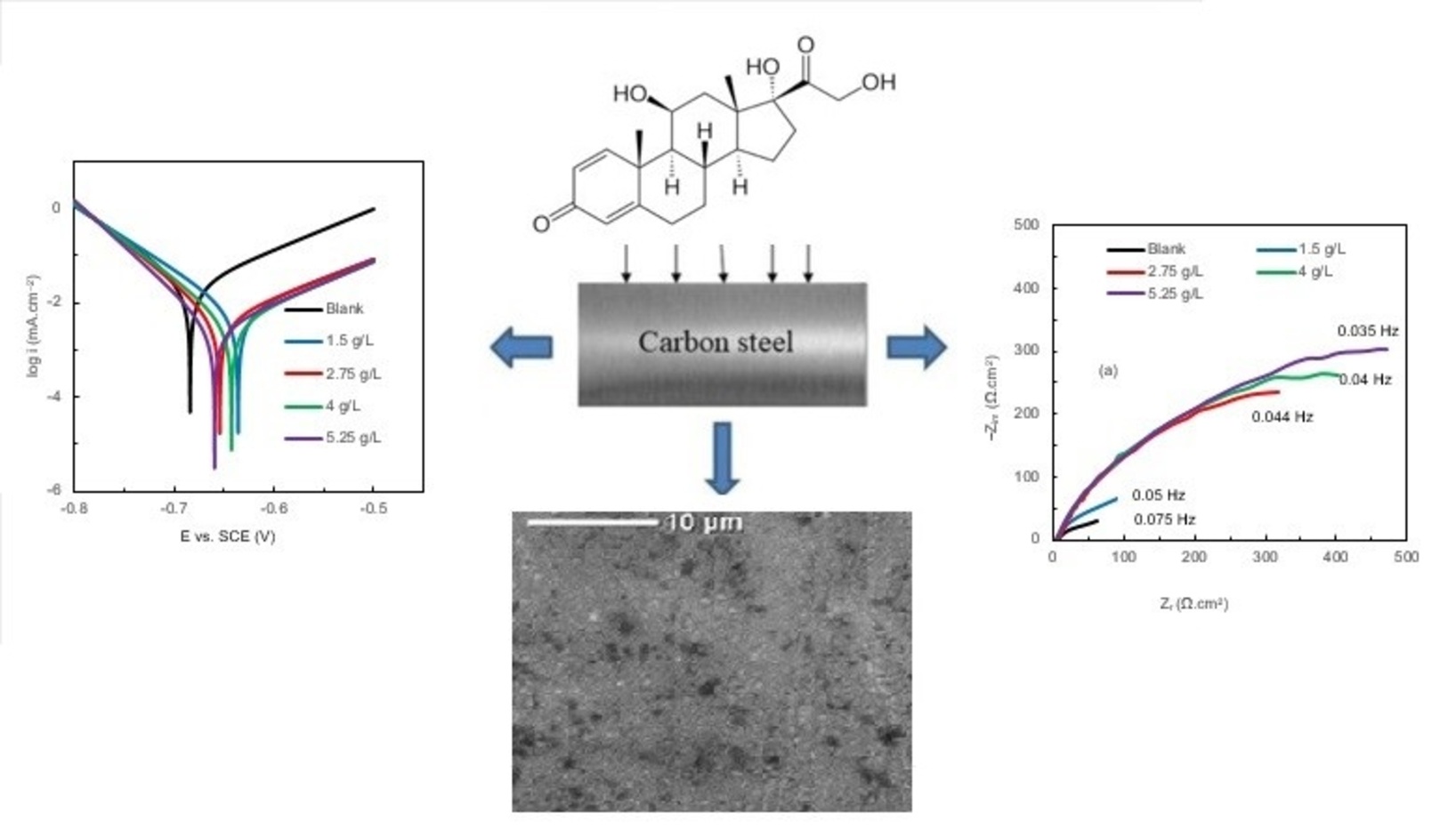Adsorption and Corrosion Inhibition Effect of Expired Prednisolone on AISI 1020 Carbon Steel: Electrochemical, Gravimetric, and Surface Studies
DOI:
https://doi.org/10.17344/acsi.2025.9289Abstract
The present study evaluated the inhibition performance of expired prednisolone against the corrosion of AISI 1020 carbon steel in a 3.5% sodium chloride medium. The inhibition effectiveness was evaluated using electrochemical impedance spectroscopy, potentiodynamic polarization, gravimetric measurements, and surface characterization techniques. Data obtained from the polarization studies indicated that prednisolone acted as mixed-type inhibitor. Electrochemical impedance spectroscopy results revealed an increase in charge transfer resistance with rising inhibitor concentration. The inhibitor showed a maximum inhibition efficiency of 90% at 298 K. The interaction between the steel surface and the inhibitor was determined to be physisorption, consistent with the Langmuir adsorption isotherm model. The corrosion inhibition performance of prednisolone decreased with increasing temperature, reaching 79.42% at 328 K. Surface characterization showed that the inhibitor significantly reduced the corrosion on the metal surface.

Downloads
Published
Issue
Section
License
Copyright (c) 2025 Sihem Kherraf, Malika Foudia, Zohra Djetoui, Leila Kherraf , Nour El Houda Sobhi

This work is licensed under a Creative Commons Attribution 4.0 International License.
Except where otherwise noted, articles in this journal are published under the Creative Commons Attribution 4.0 International License
